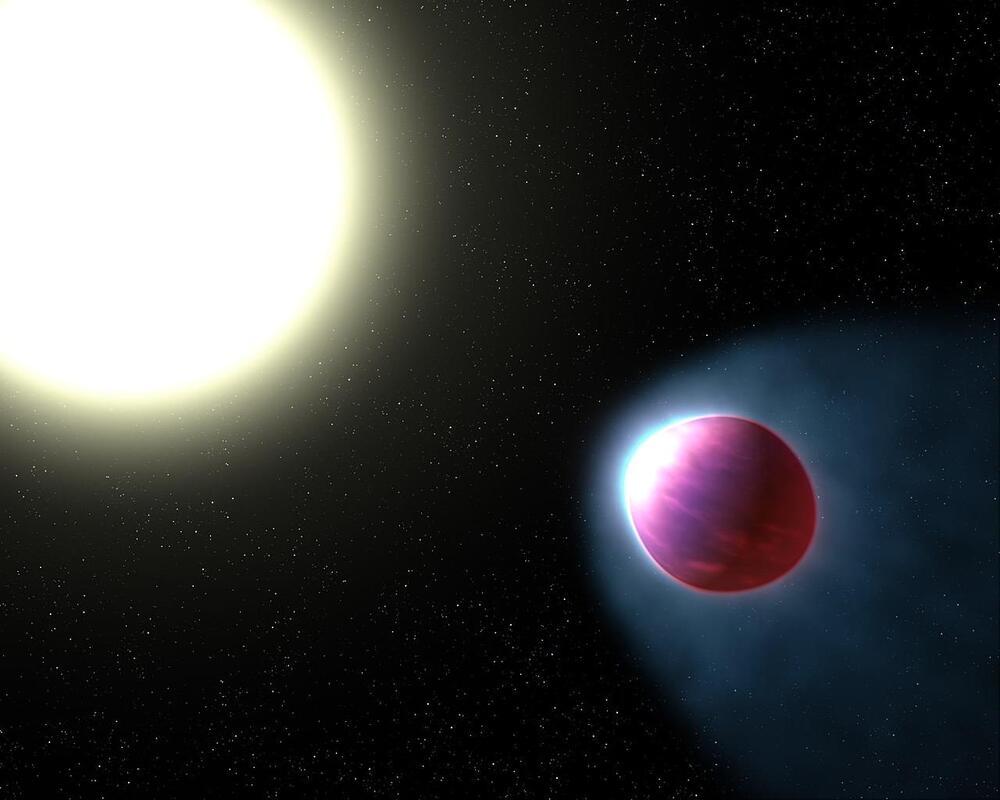Meteorologists on Earth struggle to predict the weather, but what about scientists trying to predict the weather on exoplanets that are light-years from Earth? This is what a recently accepted study to The Astrophysical Journal Supplement hopes to unveil as an international team of researchers used data from NASA’s Hubble Space Telescope to conduct a three-year investigation into weather patterns on WASP-121 b, which is a “hot Jupiter” that orbits its star in just over one day and located approximately 880 light-years from Earth. This study holds the potential to not only advance our understanding of exoplanets and their atmospheres, but also how we study them, as well.
Artist impression of WASP-121 b orbiting its host star. (Credit: NASA, ESA, and G. Bacon (STSci))
“The assembled dataset represents a significant amount of observing time for a single planet and is currently the only consistent set of such repeated observations,” said Dr. Quentin Changeat, who is an Honorary Research Fellow in the Department of Astronomy at University College London and lead author of the study. “The information that we extracted from those observations was used to infer the chemistry, temperature, and clouds of the atmosphere of WASP-121 b at different times. This provided us with an exquisite picture of the planet changing over time.”










Comments are closed.